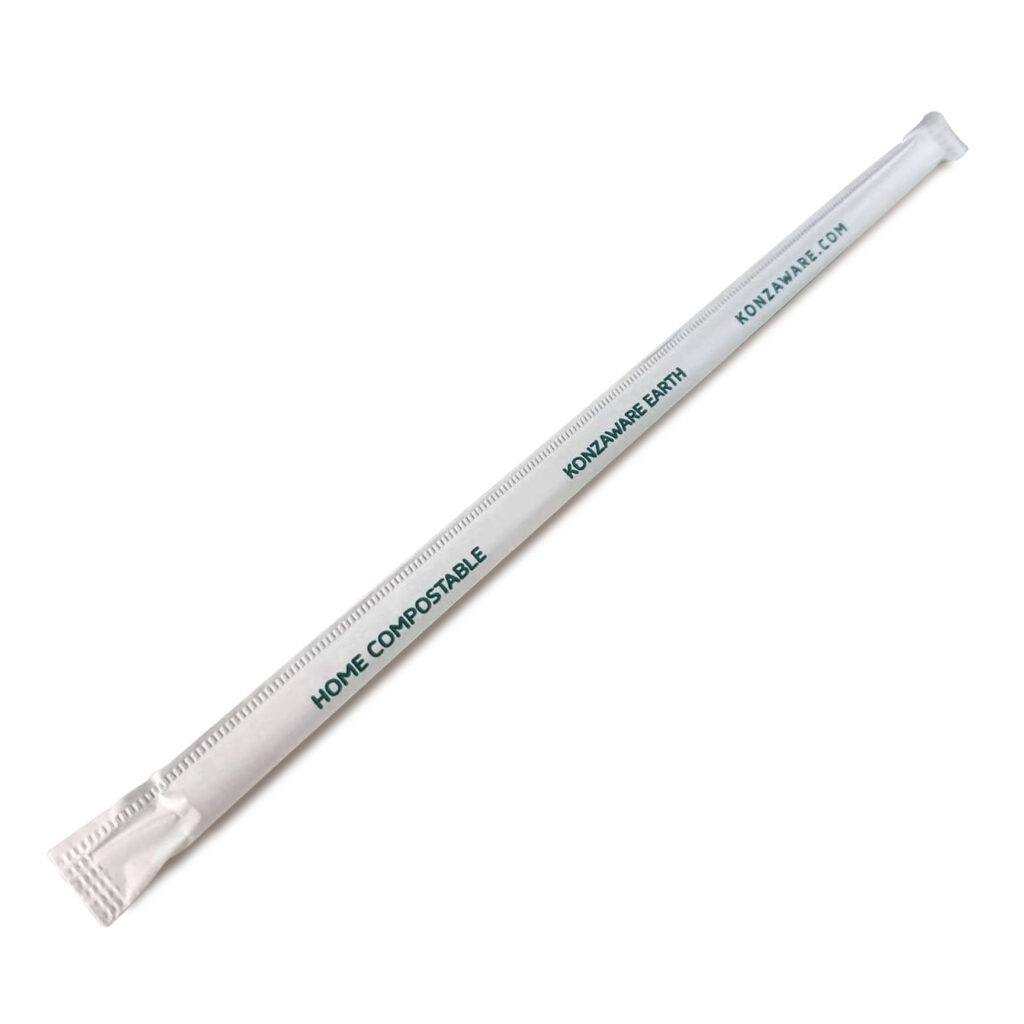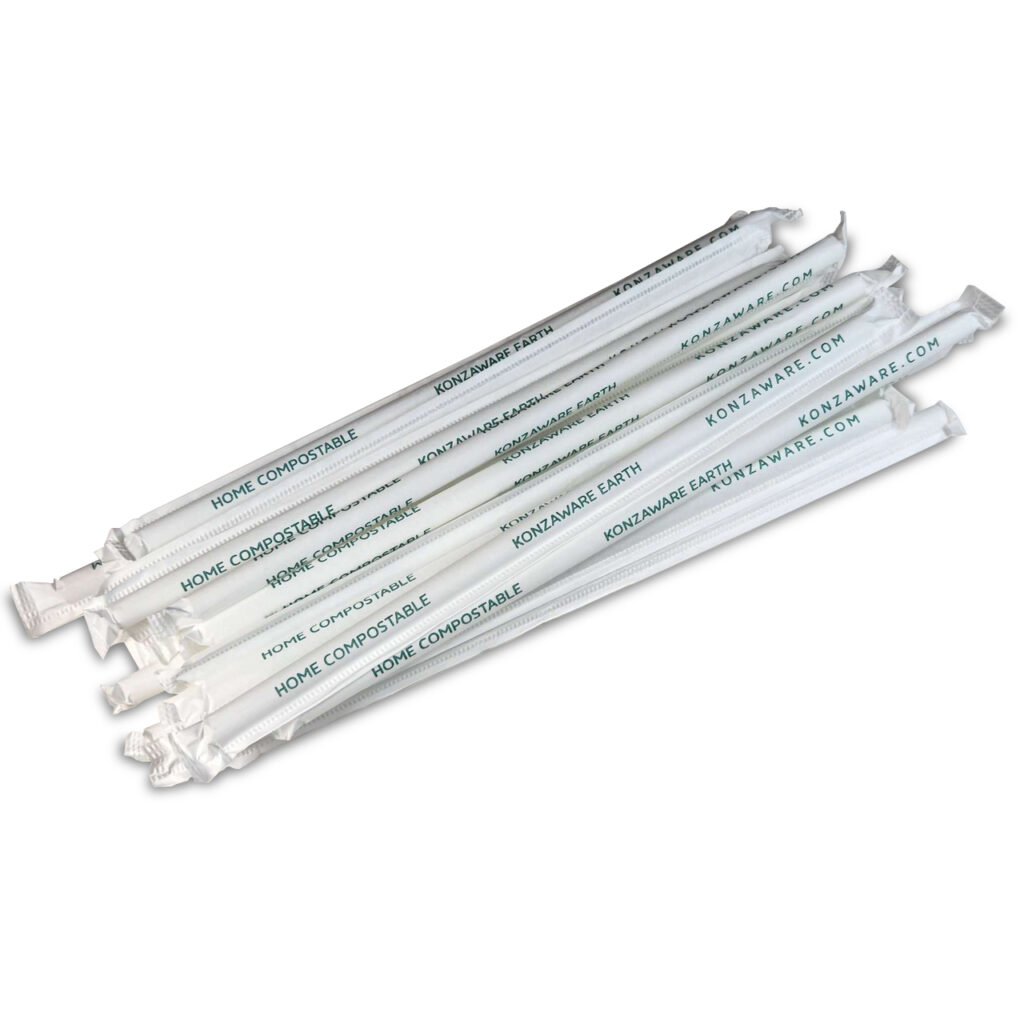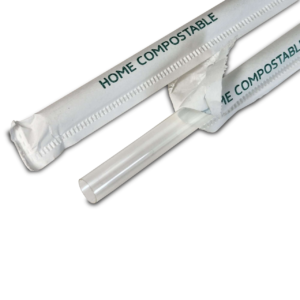Introduction
Biodegradable straws have gained significant attention in recent years as a more environmentally friendly alternative to traditional plastic straws. With growing concerns about plastic pollution and its impact on the environment, many individuals and businesses are seeking sustainable alternatives. Biodegradable straws offer a potential solution by breaking down naturally over time, reducing their environmental impact.
In this article, we will explore the expected lifespan of biodegradable drinking straws in 2023 and provide information on how long they can be used before degrading. We will also discuss the benefits of using eco-friendly straws, and factors that affect their lifespan, and compare them to traditional plastic straws. Additionally, we will provide tips for prolonging the lifespan of eco-friendly straws and discuss disposal options.
Biodegradable straws are typically made from materials such as paper, bamboo, or plant-based plastics. These materials are designed to break down naturally in the environment, reducing the amount of waste that ends up in landfills or oceans. However, the lifespan of sustainable straws can vary depending on several factors.
Factors that affect the lifespan of biodegradable straws include the specific material used, exposure to moisture or heat, and the conditions in which they are stored. For example, paper straws may degrade more quickly when exposed to liquids, while plant-based plastics may require specific composting conditions to break down effectively.
It is important to note that the expected lifespan of biodegradable drinking straws can vary from a few weeks to several months, depending on these factors. Therefore, it is crucial to understand the specific instructions provided by the manufacturer and follow proper usage and storage guidelines.
In the next section, we will delve into the benefits of using biodegradable straws and how they compare to traditional plastic straws. Stay tuned to discover more about the lifespan of biodegradable straws and how they can contribute to a more sustainable future.
What are biodegradable straws?
Biodegradable straws are a type of straw that is designed to break down and decompose naturally over time. Unlike traditional plastic straws, which can take hundreds of years to degrade, biodegradable straws are made from materials that are more environmentally friendly and can break down much faster.
There are several different types of materials that can be used to make biodegradable drinking straws, including paper, bamboo, and certain types of plastics. These materials are chosen because they are able to break down through natural processes, such as exposure to moisture and microorganisms.
One of the key benefits of using biodegradable straws is that they help to reduce the amount of plastic waste that ends up in landfills and oceans. Traditional plastic straws are a major contributor to plastic pollution, and their long lifespan means that they can persist in the environment for many years. Biodegradable straws, on the other hand, break down relatively quickly and do not leave behind harmful microplastics.
It is important to note that while biodegradable straws are a more sustainable alternative to traditional plastic straws, they still require proper disposal in order to fully benefit the environment. Simply throwing a biodegradable straw in the trash can still contribute to waste and pollution. Instead, it is recommended to dispose of biodegradable straws in compost bins or recycling facilities that are equipped to handle these materials.
In short, biodegradable straws are a more environmentally friendly alternative to traditional plastic straws. They are designed to break down naturally over time and can help to reduce plastic waste. The lifespan of biodegradable drinking straws can vary, but they typically last for a few weeks to a few months before degrading. Proper disposal is important to ensure that these straws have the desired environmental impact.
Benefits of using biodegradable drinking straws
Biodegradable straws offer several benefits compared to traditional plastic straws. Here are some of the advantages of using biodegradable straws:
Environmental friendliness:
One of the primary benefits of biodegradable straws is their positive impact on the environment. Unlike plastic straws, which can take hundreds of years to decompose, biodegradable straws are designed to break down naturally within a shorter period. This means that they do not contribute to the growing problem of plastic pollution in our oceans and landfills.
Reduced carbon footprint:
Biodegradable straws are often made from renewable resources such as plant-based materials like cornstarch or bamboo. These materials require less energy to produce compared to plastic straws, which are derived from fossil fuels. By using biodegradable straws, individuals and businesses can reduce their carbon footprint and contribute to a more sustainable future.
Health and safety:
Biodegradable straws are generally considered safer for both humans and wildlife. Plastic straws can release harmful chemicals when they break down, posing a risk to both the environment and human health. In contrast, biodegradable straws are made from natural materials that are less likely to leach harmful substances.
Versatility:
Biodegradable straws come in various shapes, sizes, and colors, making them suitable for a wide range of beverages and occasions. Whether you’re enjoying a cold drink at a restaurant or sipping a hot beverage at home, there is a biodegradable drinking straw option available to meet your needs.
Consumer demand and perception:
With the increasing awareness of plastic pollution and the desire for more sustainable alternatives, many consumers are actively seeking out biodegradable straws. By offering biodegradable options, businesses can attract environmentally conscious customers and enhance their brand image.
In conclusion, using biodegradable straws offers numerous benefits, including environmental friendliness, reduced carbon footprint, improved health and safety, versatility, and meeting consumer demand. By making the switch to biodegradable drinking straws, individuals and businesses can contribute to a cleaner and more sustainable future.
Factors that affect the lifespan of biodegradable straws
The lifespan of biodegradable straws can vary depending on several factors. Understanding these factors can help users make informed decisions about the use and disposal of these eco-friendly alternatives to traditional plastic straws.
Material composition:
Biodegradable straws are typically made from materials such as paper, bamboo, or plant-based plastics. The specific composition of the straw can affect its durability and how long it takes to break down. For example, paper straws may be more prone to becoming soggy or disintegrating when exposed to liquids for an extended period.
Exposure to moisture:
Moisture is a key factor in the degradation process of eco-friendly straws. If these straws are exposed to high levels of moisture, such as in hot beverages or humid environments, they may break down more quickly. It is important to consider the intended use of the straw and choose a material that can withstand the expected moisture levels.
Temperature:
Extreme temperatures can also impact the lifespan of biodegradable straws. Excessive heat or cold can accelerate the degradation process, causing the straw to break down more rapidly. It is advisable to store biodegradable straws in a cool, dry place to maintain their integrity.
Usage habits:
The frequency and manner in which biodegradable straws are used can affect their lifespan. Straws that are used for longer periods or subjected to rough handling may degrade more quickly. It is important to handle these straws with care and avoid excessive bending or twisting.
Disposal method:
Proper disposal is crucial for the effective degradation of biodegradable drinking straws. If these straws are not disposed of in the correct manner, such as in composting facilities or recycling bins, they may end up in landfills where the conditions for degradation are not optimal. Following the recommended disposal guidelines can help ensure that these straws break down as intended.
By considering these factors, users can have a better understanding of how long eco-friendly straws are likely to last and make choices that align with their sustainability goals. It is important to note that the lifespan of biodegradable straws can vary, and it is always advisable to refer to the specific manufacturer’s instructions for the most accurate information.
How long do eco-friendly straws typically last?
The lifespan of biodegradable straws can vary depending on several factors. These factors include the material used to make the straws, the conditions in which they are used, and the disposal method.
Biodegradable straws are typically made from materials such as paper, bamboo, or plant-based plastics. Each of these materials has its own rate of degradation. Paper straws, for example, are designed to break down relatively quickly, usually within a few months. Bamboo straws can last longer, with an average lifespan of around one year. Plant-based plastics, on the other hand, can take several years to fully degrade.
KonzaWare biodegradable straws take weeks to fully degrade in a home compost heap. When they do, they become soil for healthy plant life.
The conditions in which the straws are used can also affect their lifespan. If the straws are exposed to high temperatures or excessive moisture, they may degrade more quickly. Similarly, if the straws are used for hot beverages or acidic drinks, they may break down faster than if they were used for cold or neutral liquids.
Proper disposal is another important factor in determining the lifespan of eco-friendly straws. If the straws are composted in a commercial composting facility, they are likely to break down more quickly and completely. However, if they are disposed of in a landfill or littered in the environment, they may take longer to degrade or not degrade at all.
It is important to note that the term “biodegradable” does not necessarily mean that the straws will completely disappear or turn into compost. Instead, it means that they will break down into smaller pieces over time. These smaller pieces can still have an impact on the environment, especially if they end up in bodies of water or are ingested by wildlife.
In conclusion, the lifespan of biodegradable straws can vary depending on the material, conditions of use, and disposal method. While some straws may degrade within a few months, others may take several years. It is important to consider these factors and choose the most appropriate type of biodegradable straw for your needs. Additionally, proper disposal is crucial to ensure that these straws have the least possible impact on the environment.

Comparison of sustainable straws to traditional plastic straws
In this section, we will compare biodegradable straws to traditional plastic straws to understand the differences in their lifespan and environmental impact.
Traditional plastic straws are made from non-biodegradable materials such as polypropylene or polystyrene. These materials can take hundreds of years to break down, leading to significant environmental pollution. Plastic straws are one of the top contributors to plastic waste in the oceans, causing harm to marine life and ecosystems.
On the other hand, biodegradable straws are designed to break down naturally over time. They are typically made from materials such as paper, bamboo, or plant-based plastics. The lifespan of eco-friendly straws can vary depending on the specific material used and the conditions in which they are used and disposed of.
While traditional plastic straws can last for hundreds of years, biodegradable straws are designed to degrade within a shorter timeframe. However, it is important to note that the exact lifespan of biodegradable straws can vary. Some may degrade within a few months, while others may take up to a year or more.
One key advantage of biodegradable straws is their reduced environmental impact. As they break down, they do not release harmful chemicals or microplastics into the environment. This makes them a more sustainable alternative to traditional plastic straws.
It is worth mentioning that the lifespan of eco-friendly straws can be influenced by various factors. For example, exposure to moisture, heat, or sunlight can accelerate the degradation process. Additionally, proper disposal methods, such as composting or recycling, can also affect the lifespan of biodegradable straws.
In conclusion, biodegradable straws offer a more environmentally friendly alternative to traditional plastic straws. While their lifespan may be shorter, they are designed to degrade naturally and reduce the negative impact on the environment. By choosing biodegradable straws, individuals and businesses can contribute to the reduction of plastic waste and help protect our planet’s ecosystems.
Tips for prolonging the lifespan of sustainable straws
Eco-friendly straws are designed to break down naturally over time, but there are still ways to prolong their lifespan and get the most use out of them before they degrade. Here are some tips to help you make your biodegradable straws last longer:
Store them properly:
Proper storage is essential to prevent premature degradation of biodegradable drinking straws. Keep them in a cool, dry place away from direct sunlight and moisture. This will help maintain their structural integrity and prevent them from breaking down too quickly.
Avoid hot liquids:
Eco-friendly straws are generally not recommended for use with hot beverages. Heat can accelerate the degradation process, causing the straws to break down faster. Stick to using them with cold or room-temperature drinks to maximize their lifespan.
Rinse and dry after use:
After each use, rinse your eco-friendly straws with water to remove any residue or debris. Allow them to air dry completely before storing them. This will help prevent the growth of mold or bacteria, which can speed up the degradation process.
Use them responsibly:
Eco-friendly straws are designed for single use, but if you handle them with care, they can be used multiple times. Avoid bending or twisting the straws excessively, as this can weaken their structure and make them more prone to breaking.
Consider alternative options:
If you’re looking to reduce waste even further, consider using reusable straws made from materials like stainless steel or glass. These options can last for years with proper care and cleaning, eliminating the need for disposable straws altogether.
By following these tips, you can help prolong the lifespan of your eco-friendly straws and reduce your environmental impact. Remember to dispose of them properly once they have reached the end of their usable life. Look for composting facilities or recycling programs that accept biodegradable materials to ensure they are disposed of in an eco-friendly manner.
As technology continues to advance, we can expect to see further developments in sustainable drinking straw technology. Researchers are constantly working on improving the durability and lifespan of these straws, making them even more sustainable and environmentally friendly. By staying informed and making conscious choices, we can all contribute to a greener future.
Disposal options for biodegradable straws
When it comes to the disposal of biodegradable straws, there are a few options to consider. The goal is to ensure that these straws break down in an environmentally friendly manner, without causing harm to the ecosystem. Here are some disposal options for eco-friendly straws:
Composting:
One of the most popular and eco-friendly ways to dispose of biodegradable drinking straws is through composting. These straws are typically made from materials such as paper, bamboo, or cornstarch, which can easily break down in a composting environment. By placing the straws in a compost bin or pile, they will naturally decompose and turn into nutrient-rich soil.
Recycling:
Depending on the material used to make the eco-friendly straws, they may be recyclable. It is important to check with your local recycling facility to see if they accept these types of straws. If they do, make sure to clean and separate the straws from other waste before recycling them.
Landfill:
While not the most sustainable option, biodegradable straws can also be disposed of in a landfill. However, it is important to note that even though these straws are designed to break down more quickly than traditional plastic straws, they still require specific conditions to decompose properly. In a landfill, where oxygen and sunlight are limited, the breakdown process may be slower.

Incineration:
Another option for disposing of biodegradable straws is through incineration. When burned at high temperatures, these straws can be converted into energy. However, it is crucial to ensure that the incineration process is carried out in a controlled and regulated manner to prevent the release of harmful pollutants into the atmosphere.
It is important to remember that the best disposal option for biodegradable drinking straws may vary depending on the specific material they are made from and the facilities available in your area. It is always recommended to research and follow the guidelines provided by local waste management authorities to ensure proper disposal.
In conclusion, eco-friendly straws offer a more sustainable alternative to traditional plastic straws. By understanding the disposal options available, we can ensure that these straws are disposed of in an environmentally responsible manner. Whether through composting, recycling, landfill, or incineration, it is crucial to choose the most suitable method for the specific type of sustainable straw.
Future developments in eco-friendly straw technology
The future of biodegradable straw technology holds great promise as researchers and innovators continue to explore new materials and manufacturing processes. As the demand for sustainable alternatives to single-use plastic straws grows, there is a need for even more durable and long-lasting biodegradable options.
One area of development is the use of alternative materials for biodegradable straws. While many current biodegradable straws are made from plant-based materials such as cornstarch or bamboo, researchers are experimenting with other materials that may offer even better durability and biodegradability. For example, some companies are exploring the use of seaweed-based materials, which are not only biodegradable but also have the potential to be more resistant to moisture and heat.
Another area of focus is improving the manufacturing processes for eco-friendly straws. Innovations in manufacturing techniques can help create straws that are more structurally sound and less prone to breaking or degrading prematurely. By optimizing the production process, manufacturers can ensure that biodegradable drinking straws have a longer lifespan and can withstand the rigors of everyday use.
Furthermore, advancements in eco-friendly materials and manufacturing processes can also lead to cost reductions, making biodegradable straws more accessible and affordable for businesses and consumers. As the demand for sustainable alternatives increases, economies of scale can be achieved, driving down production costs and making biodegradable straws a viable option for a wider range of applications.
In addition to material and manufacturing advancements, future developments in sustainable drinking straw technology may also include innovations in disposal methods. While many sustainable drinking straws can be composted, there is still a need for more widespread composting infrastructure to ensure proper disposal. Researchers and policymakers are working towards creating a more robust composting system that can handle the increased use of sustainable straws and other compostable products.
In conclusion, the future of biodegradable straw technology is bright. With ongoing research and development, we can expect to see even more durable and long-lasting eco-friendly drinking straws in the coming years. These advancements will not only benefit the environment by reducing plastic waste but also provide businesses and consumers with sustainable alternatives that meet their needs.




